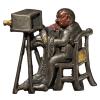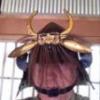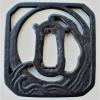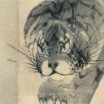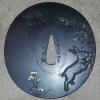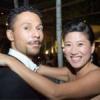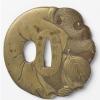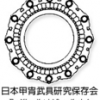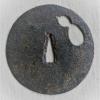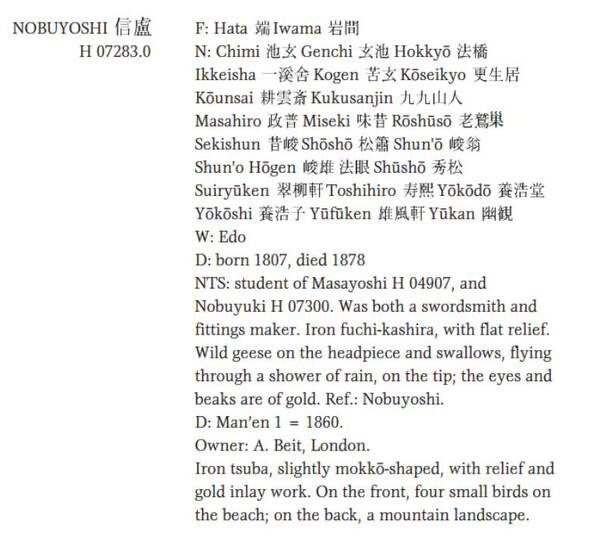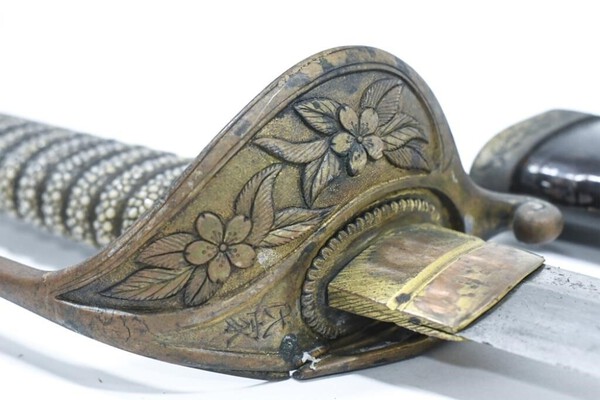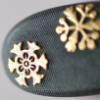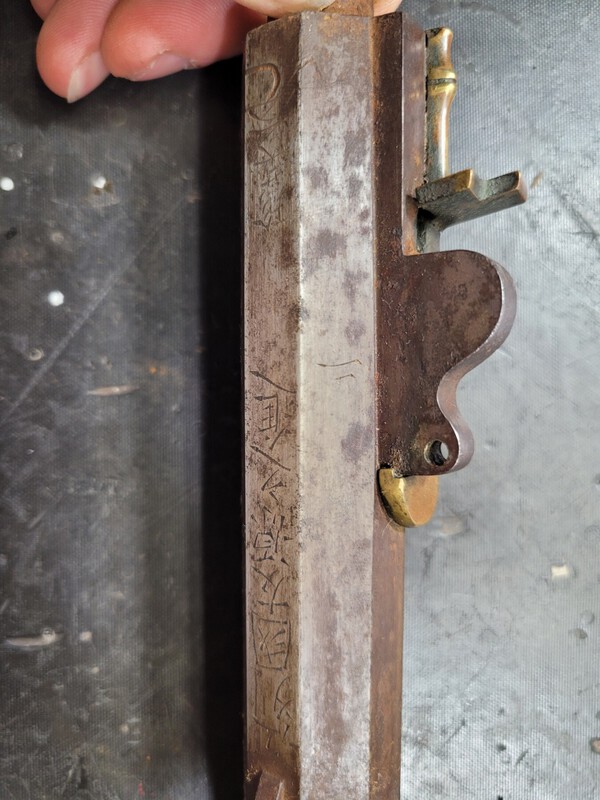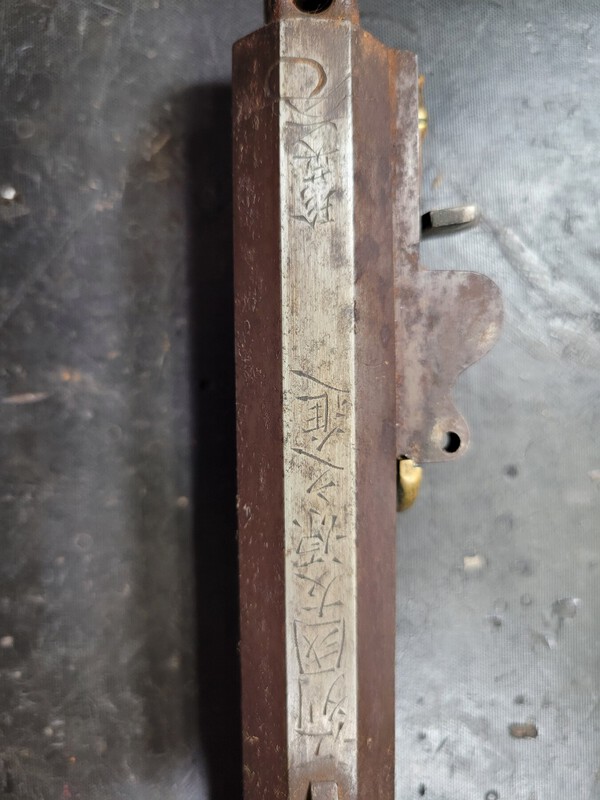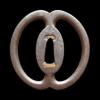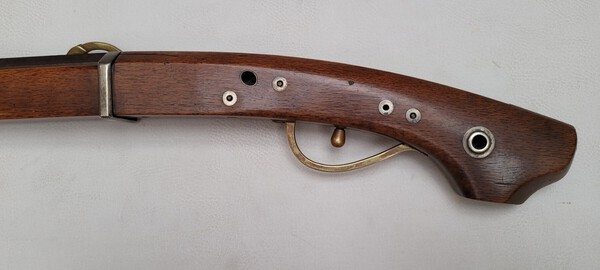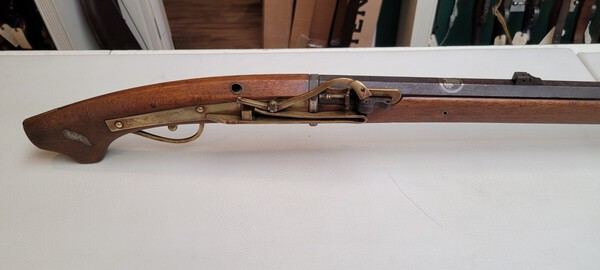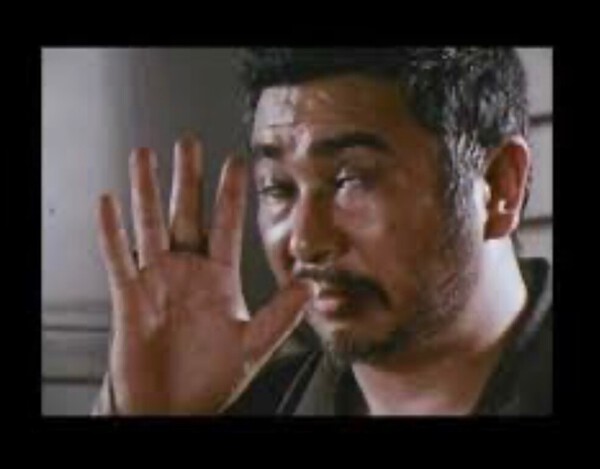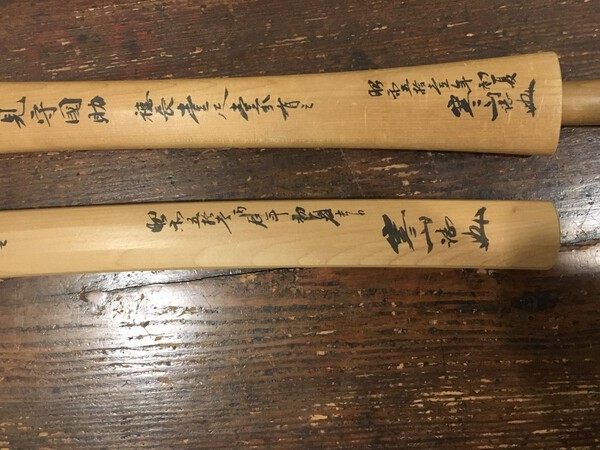Leaderboard
Popular Content
Showing content with the highest reputation on 12/26/2021 in all areas
-
Since its (almost) the end of the year, let's see what treasures you've acquired this year - I seemed to have gotten entirely too many pieces this year, but here are some of the top ones, in no particular order: 1. Killer kanayma: 2. Monkey/moon themed ko-shouami: 3. and just to make your skin crawl, here's a millipede themed tsuba attributed to Myouchin: 4.Kodai Jingo 5."ume" tada: Enjoy, rkg (Richard George)6 points
-
Merry Christmas! Woo-hoo, thanks again for starting this Stephen. I've sent the payment and my shipping info to Brian. Besides two pieces I have that came via koshirae I've not gotten into fittings much so these will make a great start. Cheers to all!6 points
-
A couple of pieces amongst this years acquisitions , due to be posted on the long running thread ' A Series of fittings ' towards the end of next year - I should add that 2021 has been a very busy year , purchase wise , by my standards . Seem to have got hold of a number of reasonable quality fittings , but more by luck than judgement. First Tsuba Iron sukashi - Akasaka 5th generation NBTHK papered - subject Hikiryo Mon & Kiri4 points
-
To answer your question above, unfortunately no again, we cannot really assume that it was made by a close disciple. Maybe it was, or maybe it was made more recently and someone has added this Mei to make it look perfect. There are many clever fakes around. How many experts in the world can take that shot? Calimero, if you are lucky you will get a selection of opinions here, many of them helpful, pointing you in a certain direction, but none will be 100% reliable or guaranteed to be accurate. You cannot really base a sale on what someone has said here. These things take time, something that many people do not think they have. If dealers or collectors wish to be more certain, they send the tsuba off to a respected organization like the NBTHK and either get a refusal, or a signed certificate of authenticity. This is the normal route, definitely not a short-cut. Some buyers are happy to make a judgement with their eyes, but many buyers will happily pay more if they feel confident that the article has been appraised by independent experts who have a responsibility and a vested interest in getting their facts right. Even so, the system is not watertight, and our only real protection is constant learning.4 points
-
Hizen (no) kuni Musashi Daijo Fujiwara Tadahiro3 points
-
Awesome, thanks guys! Especially Stephen @cju777 you can message me, and drop your address and we'll get this sorted. Huge thanks for your support too, and some nice tsuba headed your way. Grev, let me know if I can compensate for the shipping. The same goes to @christianmalterre Thanks go out to both of you. Chris, you can do the payment via the link in my signature if you like. Thanks all! PS - Yeah, it's true. I don't drink any alcohol or do drugs at all. No other women either. But trust me, I make up for the lack of those vices in other ways3 points
-
Here are two of the tsuba added to my collection this year, both depict shishi and peonies. The two tsuba were probably made about 200 years apart and show differing aspects of the subject. Shishi are mythical guardian animals in both China and Japan and the peony is regarded in Japan as the king of flowers and symbolises bravery, honour and good fortune. Consequently the two are often depicted on tsuba together. The first is a shakudo tsuba, signed Masanaga, plus kao, with a pair of shishi on the omote and a peony on the ura. The tsuba was catalogued as Haynes Index no. H 04250, which identifies the artist as Chosuke Masanaga (d. ca 1700), who was a student of Nara Toshinaga (Markus Sesko) or Ito Masatsugu (Haynes). However, there were two generations of Masanaga in the Nara School and both used the same kanji for their signatures. The first generation, Seiroku, was a student of Toshinaga (either the 3rd generation master of the Nara School or a student of the same name). His (adopted?) son was Gihachi Masachika, who signed Masanaga for a while after his father’s death and was from the Kawakatsu family and a nephew of Sugiura Joi. The Nara tsuba artist Gohachi Masachika may have been an alternative name used by either of the other two Masanaga (see gen chart). Consequently, there is some uncertainty as to the identity of the artist who made this tsuba (assuming, as always, the signature is genuine). Specification: Height: 7.6 cm, Width: 7.4 cm, Thickness (rim): 0.4 cm, Weight: 216 g This tsuba was purchased by Edward Wrangham from the Roland Hartman Collection of Japanese Metalwork (Christies, 30 June 1976, Lot 130). I was told by the late collector and friend, Sidney Divers, in about 1976 ‘Start collecting tsuba. They will soar in price.’ In 45 years this one barely doubled. The second, a copper tsuba, is a radically different interpretation of the same theme and was made by a modern artist, Yanagawa Morihira (1899-1971). Apparently Ichiyushi/Shinryuseki/Shinryoso) Morihira was a Tokyo artist. From the age of 14 he studied with Yoshioka Mitsushige (who died 14 September, 1923, in the Great Kanto Earthquake). He then studied with Toyokawa Mitsunaga (second generation) and took the name Mitsuo until he established himself. The front (omote) of the tsuba shows both a shishi and peonies, whereas the reverse (ura) only shows the shishi. Interestingly, the shishi on the omote has a silver body and a golden mane and tail, whereas the combination of silver and gold is reversed on the ura. The heads on both animals is copper. Shishi are often represented as playful creatures, but these two are muscular with a fearsome pose and the silver shishi has a head which looks rather like Hannya, the Japanese female demon. The engraved peonies on the omote are coloured with silver and gold gilding and the petals are in a darker shade of silver. The gold and silver seem to be painted on, i.e. amalgam. The outlines are defined in katakiribori (half cut carving) and kebori (hair carving) and, particularly the silver, darkened to add extra tonality to the design. The nagako ana has four 32(?)-petalled chrysanthemum punch marks on each side, purely for decoration. There is also a single kozuka hitsu ana, filled with a gilt cat scratched plug. Shishi is also the name given to a group of political activists (Ishin Shishi 維新志士) in the late Edo period who opposed the westernisation of Japan. I think that it is likely that this tsuba was made in the 1930’s when Japanese militarism was at its peak, which is probably why I got it below estimate. Specification: Height: 8.75 cm, Width: 8.4 cm, Thickness (rim): 0.7 cm; Nakago: 0.4 cm, Weight: 254 g A very similar tsuba to this, in terms of technique, by Morihira is currently for sale by Aoi-Art (https://www.aoijapan.com/tsuba-morihira-sinryuseki/). I bought this tsuba in memory of my nephew, Gary, who died a few weeks before this tsuba originally came up for sale in 2020. It was unsold and came up again at the next auction (2021) when I decided to buy it. I would not normally have purchased this tsuba but Gary was an extrovert party guy whose group of girlfriends gave him the nickname Simba. This over the top depiction of shishi will always remind me of Gary. All the best for 2022, John2 points
-
Calimero, nice tsuba, I like them all. If one pictures oneself at the bottom of a very, very deep well in Germany and one looks up to the sky and cannot see it, the study of sword fittings is as deep as this metaphor. It is hardly possible to 'surface skim' as your perceptive questions suggest. But do keep at it for it might become attractive enough for you to transfer allegiance from your other very time consuming interest!! BTW, Germany has some very famous tsuba collectors in past history. Best regards, Barry Thomas. (Melbourne, Australia)2 points
-
Chris, Sadly it doesn't really get much easier. First you have to get a tsukamaki ito that is the right width so that it reaches the kashira exactly and that the two ends are pointing to the back of the tsuka at that point. You can do a bit to squeezing up to get this right but not too much. The width should also be such that the major nodule of the rayskin is revealed between the upper two twists. I've just spent weeks doing a hilt with 0.7mm jabara, using 10 strands (or really 5 pairs with an S and a Z twist in each strand). I thought I had it right, doing fancy plaiting to hold the menuki and everything, and feeling dead smug when it worked out right with the kashira only to find that the last twist is exactly over the main nodule!!!! Back to square one and try again. Ian Bottomley2 points
-
Congratulations Chris in Bangkok please contact Brian on payments he will supply us with your shipping address congrats again and thank you for your support2 points
-
It's a good cause folks! 75% of it will go right back into the forum. The balance will go to hookers and blow. Can't ask for a better cause than that!2 points
-
First batch: $40 dollars each + shipping -7" by 2.5" -foam insert will prevent swords from sagging and hitting surfaces (or other swords on same pillow) -simple design doesn't distract from the steel -slightly thicker than most makura to make picking up and setting down swords easier -fabric won't deform or bunch up -hand sewn by me Colors available: 1-Green 3-Navy 1-Black1 point
-
1 point
-
1 point
-
1 point
-
No generation named. Just the words "二字在銘" (meaning: two-character signature)1 point
-
Didn't really get much in 2021 generally speaking it has been a hard year. Here is my only memorable purchase from 2021 per Richard's request. A middle Edo Period Yagyū Tsuba. More information can be found on my website about this tsuba: Tsuba Gallery #4 | Tsuba Otaku. It is the second tsuba from the top on the webpage.1 point
-
1 point
-
1 point
-
1 point
-
1 point
-
Beautiful. Thank you for sharing. Could you put in a good word for me to Santa for next year? Merry Christmas and a Happy New Year to ALL MikeR1 point
-
1 point
-
Well done Stephen I perfect storm NMB members could contribute to the NMB Brian gets some (and appreciation) Chris gets a good deal Nice I just need Chris's address and I'll post it to him1 point
-
Hello everyone, thank you for your time and expertise in advance. After looking over your forum, it seems this is the place to find answers to my questions. I have acquired my first Tanegashima match lock rifle. Below are the photos of the gun dis-assembled. I will upload more photos of the whole rifle. The stock is free of decoration with the exception of one rabbit on the grip area. Basic brass round/ring type fittings are present on the hole/pin locations. I will also update the thread with the barrels bore size. Thank you again and I am very excited to be a part of this knowledgeable group. -Parker Bachelder1 point
-
I guess that the katana is a military sword during WWII. I can only read 百(100), 一(1), and 年(year) for sure from the date inscription on the nakago. But they suggest that the date may be 2601 of Imperial year (--> 1941).1 point
-
Hey Stephen, I''ll give the snipers some more fodder. Shinny brass on the collar. $650 Merry Christmas from this side of the globe.1 point
-
Here is the gun assembled. It seems I am missing the flash pan cover, all of the barrel retaining pins, and maybe a sling swivel that would be in front of the trigger guard? The barrel bore diameter 1.27cm I'll be attempting to de breach the gun in the future after some soaking in penetrating oil. The stock also has a hairline fracture where it meets the barrel.1 point
-
Brian lowered it to 25 dollar bid increments thank you Nicholas for the high bed of $600 two days to go happy hunting everyone1 point
-
For your information, this is not a surrender tag. The bottom of the tag has the name of the store/shop that the sword or scabbard cover was ordered from. A picture of the left side of the tag would help.1 point
-
600 For a mixture of the awesome idea to give a donation to the site and the above1 point
-
1 point
-
Japaneseswordindex shows 3 Kunihiro mei and one of them is this one: http://japaneseswordindex.com/oshigata/kunihir2.jpg Nihontoclub shows 2 kunihiro, one from Fukuoka, the other from Aomori, both using the scquare kanji for Kunihiro 國廣. Kataoka Kunihiro was RJT qualified, which is why I was wondering about a possible star stamp, but his mei looked like this: http://japaneseswordindex.com/oshigata/kunihiro.jpg I saw that small mark too, but don't know what to think about it. It could be a poorly struck Seki or Nagoya mark, but neither would necessarily mean the blade is showato, as they both show up in small form on star-stamped blades.1 point
-
Calimero, nice Tsuba! The holes and bumps on your armourer’s Tsuba represent the 4 Shiten no byo and the 4 Hibiki-ana on Kabuto helmets. That looks like a Suji kabuto, with an ‘Agemaki no Kan’ ring that many Kabuto have at the back.1 point
-
Thanks Eric, Very interesting, so Rinji mounts can have very long blades (my Masakazu of the earlier period is Sho 17/4) - your Nagamitsu (date?) is 27 3/8 in 69.4 cm (mine is 27 3/8 in 69.5 cm) so just about the same (my extreme point is slightly chipped off so was probably 69.6 or 7). Wonder if anything of 70 cm or longer will show up? Regards,1 point
-
What is the size of your pics? We don't need billboard sized pics. People don't resize anymore. Google free online image resizers and try a pic at about 800 pix wide.1 point
-
1 point
This leaderboard is set to Johannesburg/GMT+02:00

